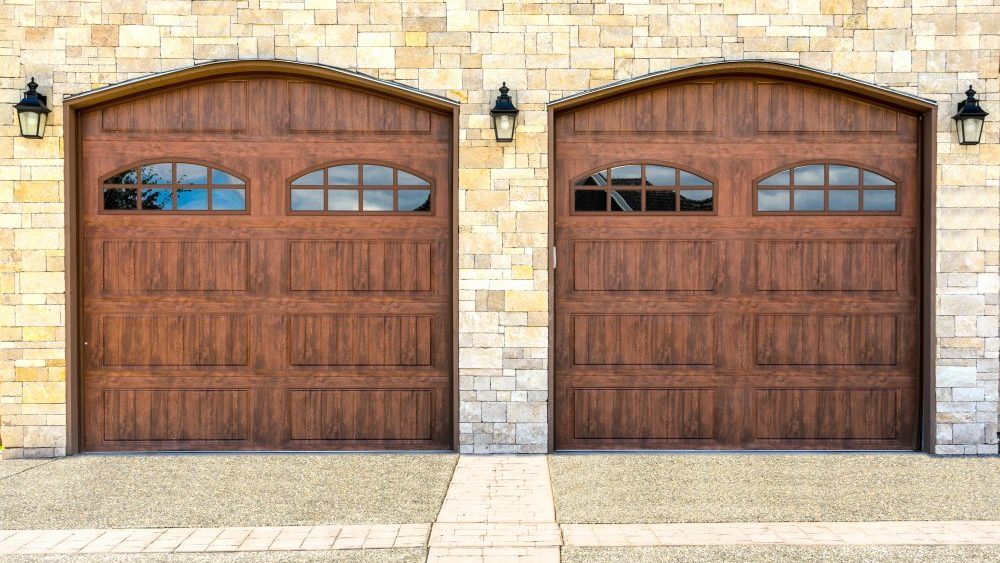It takes more than a snazzy front door to create curb appeal. These days, prospective buyers are looking for a stylish garage door that matches the architectural style of the house. Let’s take a look at what’s new and different.
Door types and styles. The most widely used garage door is the roll up sectional door, usually made of steel. Though common, manufacturers offer a variety of looks to match the overall architecture of the home, with handles, faux strapping and other hardware, plus windows to offer diverse appeal. Whether you have a traditional, contemporary or craftsman home, a door can be found to match.
Doors that swing out offer a customized look reminiscent of old barns. Another retro barn look comes with sliding doors that move horizontally along a track. Several custom door manufacturers offer gorgeous swing and slide doors, such as those at http://www.realcarriagedoors.com.
Doors don’t have to be just a plain rectangle. They can come with arched tops that bring graceful lines to your home.
Materials. Although steel is the most common material, doors come in wood, aluminum, fiberglass and composite materials. Wood offers the most elegant look, but requires the most maintenance to keep the finish attractive. Fiberglass and composite materials don’t dent, as can happen with steel doors. Aluminum doors are the lightest weight.
What is important in a garage door opener? When it comes to openers, two factors are most important. First, the right sized motor for power output is needed, especially for doors that are raised, as compared to swinging or slide types. For a two-car garage with one standard steel door spanning the opening, a half-horsepower to three-quarter horsepower motor should be plenty. For a single-car garage door a quarter-horsepower to a half-horsepower motor is sufficient. If the door is custom made and heavier than a standard steel door, go with a three-quarter horsepower motor. Always err on the side of more power, not less.
Second, a quietly operating opener makes life easier, especially for anyone in a room over or next to the garage. The noise produced by the opener in the operation of lifting depends on the type of drive it uses.
Types of drive. Chain-drive doors are the oldest type. Chain drives are the least expensive, but the noisiest.
Belt-drive openers operate the same way, except that a reinforced polyurethane or rubber belt moves the door. Belt drives are a lot quieter than chains and only cost about $75 more.
Both chain and belt drives offer “soft start” technology which eases the door up at the start rather than a sudden jolt. This helps with noise abatement.
Screw-drive openers use neither a chain nor a belt. Instead, a large threaded screw is turned by the motor which drives the door. Screw-drives usually fall in between chain and belt drives in the noise they produce.
If the doors swing outward, there are two types of openers. One opener uses a motorized pivot arm mounted at the top to push-pull the door. Two doors requires two openers. This version keeps the garage ceiling clear of any equipment. The second type uses a ceiling mounted opener where the carriage rides a chain drive and a steel rod pushes-pulls the door.
Sliding doors use a motor moving a carriage along a track mounted at the top of the door, moving parallel to the top of the door frame.
Controllers. Remote controls have come a long way. For security purposes, the typical button control no longer has a static code, but instead has a continuously updating code feature. Most cars today have a built-in garage controller device at your fingertips. To program it, you just have to be parked within range of the opener and follow instructions in your car’s owner manual. Finally, the term “remote” takes on new meaning with features like Liftmaster’s MyQ which allows you to control your door and monitor its activity using your smartphone.
A safety essential. Garage door openers are required to have a safety feature that forces the doors to stop if they hit something or encounter resistance of any type. They also have a photo electric “eye” that shoots a beam across the opening designed to stop the door if interrupted. These safety features prevent people, especially children, from getting trapped under a closing door. Periodically test these safety features to be sure they are still calibrated correctly. Wave a stick across the photo electric beam. Put a piece of lumber on the floor in the door’s pathway.


